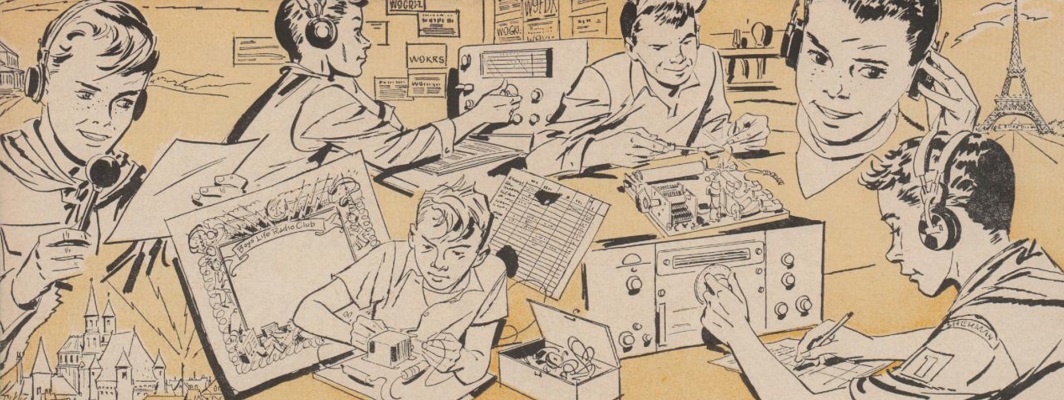(1) Complete support pole for G5RV feed point….
– this is complete except for the guy-wire. I need to get guy-wire for the upper 1/3 and lower 1/3 of the mast. I think the mast is going to work out well. It is composed of two painter’s poles (Mr. Long Arm). Each has a maximum length of 23′. For the upper section, I cut away the handle on the bottom. This will allow me to nest the upper portion’s lower 1/3 into the bottom portion’s top 1/3 of the pole. I think the total height of the mast will be around 38′. Also drilled a hole in the very top of the upper section and put an eye-bolt through it. Attached to the eye-bolt is a d-ring. I will attach the top of the feed point for the G5RV to the d-ring. As long as I can get some guy-wire… I’ll be good to go.
(2) Prep supports for the G5RV ends….
– got two large buckets from Home Depot. I placed a 3″ piece of PVC pipe (length just over the lip of the bucket) vertically in the center of the bucket. Around the pipe I put in about 4″ of cement. Turned about pretty good. I’ll be able to slide in a 2 1/2″ PVC pipe (10′ long) into the bucket and use it to secure the ends of the G5RV.
(3) Get a pop-up shelter for the operations table….
– got it at Target. 10′ by 10′ with a mosquito net. It will probably due okay in light rain, but not much more.
… and that was it for the list.
I did set up the FT-817 outside with my new RigBlaster NOMIC. Worked pretty good, got an PSK31 contact on 20M from Iowa with 5 watts. Have not set up the Tokyo amp yet.

 Only 5 days left to prep for the W4M special invent station. The recon is complete – I’m moving off the moat down to the Irwin Battery. The upper battery puts me at almost the same height of the Old Point Comfort Lighthouse. And the view is fantastic.
Only 5 days left to prep for the W4M special invent station. The recon is complete – I’m moving off the moat down to the Irwin Battery. The upper battery puts me at almost the same height of the Old Point Comfort Lighthouse. And the view is fantastic.
 Venture Crew 59 will host a Special Event Station KC3BSA at the Jambo Scoutfest 2006. Jambo 2006 will be held on the Kutztown University Campus in Pennsylvania from May 19-May 21. There will be approximately five thousand scouts attending this event. VC59 will put SSB/CW, PSK31, SSTV, EcoLink, & 2M/6M stations on the air this weekend starting Friday evening.
Venture Crew 59 will host a Special Event Station KC3BSA at the Jambo Scoutfest 2006. Jambo 2006 will be held on the Kutztown University Campus in Pennsylvania from May 19-May 21. There will be approximately five thousand scouts attending this event. VC59 will put SSB/CW, PSK31, SSTV, EcoLink, & 2M/6M stations on the air this weekend starting Friday evening. At around 9PM on May 31, 1978 were the first KNOWN transmissions of Packet over Amateur Radio. The location was Bill Wong’s Restaurant in Montreal, Canada.
At around 9PM on May 31, 1978 were the first KNOWN transmissions of Packet over Amateur Radio. The location was Bill Wong’s Restaurant in Montreal, Canada.  What a wonderful morning at Old Point Comfort Lighthouse, Fort Monroe, VA on the Chesapeake! Blue, clear skies, temp at 60d F, with a slight breeze. I could see the Norfolk Navy Base across the bay and watched as USNS Comfort pulled out towards the Atlantic.
What a wonderful morning at Old Point Comfort Lighthouse, Fort Monroe, VA on the Chesapeake! Blue, clear skies, temp at 60d F, with a slight breeze. I could see the Norfolk Navy Base across the bay and watched as USNS Comfort pulled out towards the Atlantic.